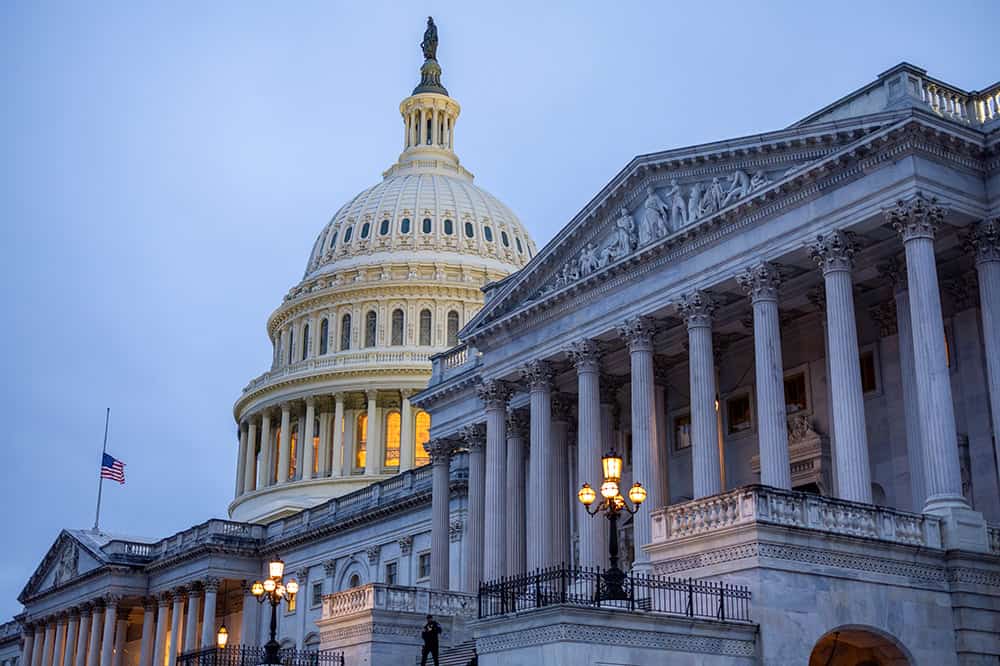Full Array of Republican Tax Cuts Could Add $9 Trillion to the National Debt
Last Updated March 26, 2025
Changes to tax policy are at the top of the agenda this year for the governing trifecta of Republicans, who control the House, Senate, and White House. At the end of the year, most of the individual income tax provisions of the Tax Cuts and Jobs Act (TCJA) of 2017 are set to expire. Republican leaders are calling for a full extension of TCJA, but they are also considering a range of other tax cuts, including eliminating taxes on Social Security benefits and overtime pay, restoring the full SALT deduction, and more. All of those tax cuts would come with a big price tag, and if not offset with spending cuts or tax increases, the proposals would substantially increase federal deficits and debt.
The Full Array of Proposed Tax Cuts Could Increase Deficits by $9.1 Trillion
The tax cuts proposed by President Trump and Republican leaders would reduce tax revenues by $7.8 trillion through the 2025–2034 budget period, according to the Tax Foundation. If not offset with spending cuts or tax increases, the tax cuts would increase deficits by $9.1 trillion over 10 years, including related interest costs. Fully extending the TCJA would cost approximately $5.0 trillion, while other elements of Trump’s tax agenda also have large price tags over ten years:
- Eliminating income taxes on Social Security benefits: $1.4 trillion;
- Restoring the full State and Local Taxes (SALT) deduction: $1.2 trillion; and
- Eliminating income taxes on overtime pay: $880 billion.
Combined Proposed Tax Cuts Will Not Fit Within House Budget Reconciliation
In February, the House of Representatives agreed to a budget resolution that laid the groundwork for an extension of the TCJA provisions using the special process of budget reconciliation. The House resolution allows for $4.5 trillion in tax cuts through 2034 — not including additional interest costs. However, all the tax cuts outlined by President Trump and leaders in Congress would add $7.8 trillion to primary deficits, exceeding the House target.
If lawmakers choose to adopt a “current policy” baseline as some have proposed, they could theoretically fit all of the proposed tax cuts into a reconciliation package because this would treat certain extensions as “cost-free." However, adopting a current policy baseline is a fiscally irresponsible budget gimmick that would still add trillions to the national debt. It would also set a dangerous precedent that could be exploited in the future by lawmakers from either party.
Conclusion
Leaders in Congress and the Administration have outlined a broad package of tax cuts that could total $9.1 trillion of increased deficits, including interest. Given the limitations of the House budget resolution and the rules of budget reconciliation, lawmakers will have to make decisions about which tax cuts to include in a final package. Lawmakers should use the budget reconciliation process to improve our debt outlook by avoiding budget gimmicks and paying for their priorities.
Photo by Kent Nishimura/Getty Images
Further Reading
Why Do Budget Baselines Matter?
Applying the current-policy baseline would not only be fiscally irresponsible in terms of this year’s tax debate, but it would set a dangerous precedent for the future.
Social Security Reform: Options to Raise Revenues
Here are the pros and cons for three approaches to increasing funds dedicated to Social Security.
Should the U.S. Change the Corporate Tax Rate in 2025?
Here’s why lawmakers lowered the corporate tax rate in 2017, how the lower rate impacted the U.S., and how the rate might be reformed in 2025.


